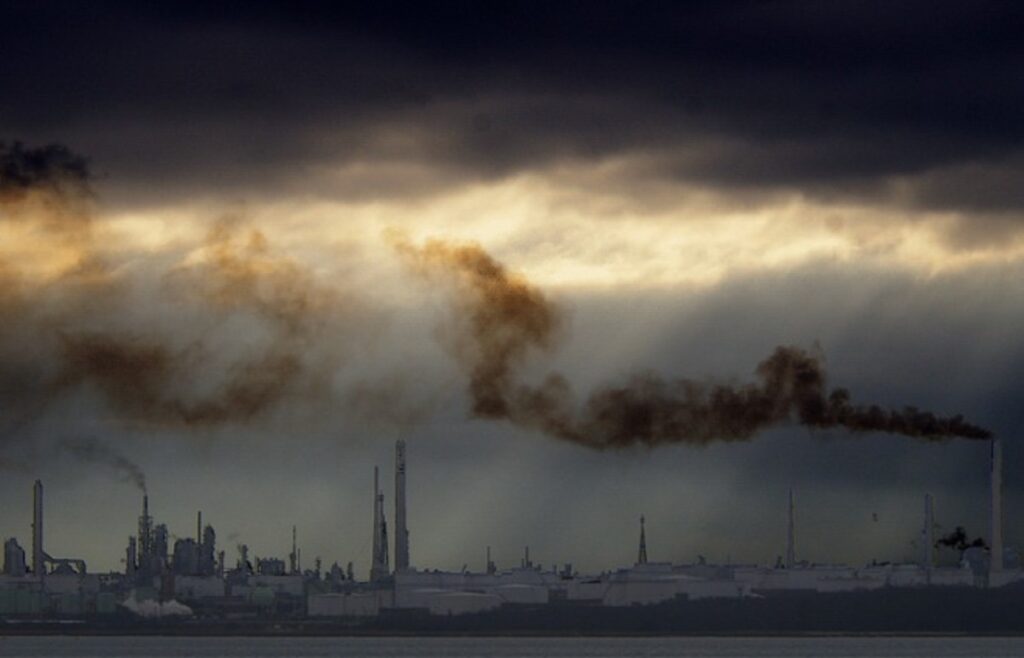The World Meteorological Organisation (WMO) this week reported that CO2 levels in the atmosphere breached all records in 2018. The Greenhouse Gas Bulletin, released on 25 November, says “globally averaged concentrations of carbon dioxide reached 407.8 parts per million in 2018, up from 405.5 parts per million (ppm) in 2017”. The last time such concentrations were seen on earth was supposedly 3-5 million years ago. The big jump in CO2 concentrations has been attributed to the combustion of fossil fuels.
Third-most dangerous GHG, nitrous oxide, is on the rise, says study
A new study published in Nature Climate Change has found that the levels of nitrous oxide (N20) – the third most important long-lived greenhouse gas that plays a major role in the depletion of the ozone layer – have increased substantially since 2009 and at a rate that is faster than what was estimated by the IPCC. The main culprits are East Asia and South America, according to the study.
The study stated that since the mid-20th century, the production of nitrogen fertilizers, widespread cultivation of nitrogen-fixing crops such as clover, soybeans and peanuts, and the combustion of fossil and biofuels has increased the availability of nitrogen substrates in the environment. This increased availability of nitrogen has made it possible to produce more food, but has also in turn released more amounts of N2O in the air.
Global warming is ‘supercharging’ Indian’s Ocean’s climate system
What does this year’s bushfires in Australia and floods in Africa have in common? They are both linked to an increasingly dangerous event called the Indian Ocean dipole, the frequency of which, scientists say, is only going to rise because global warming is ‘supercharging’ the event.
The Indian Ocean dipole is similar to the El Niño and La Niña, in that it can cause sharp changes in weather patterns. Researchers said this year’s Dipole has been the strongest so far.
Climate change to increase infectious disease burden, especially in developing countries: Lancet study
The world’s children, especially those living in India, are bearing most affected by air pollution and the infectious diseases that are brought on due to extreme heat, according to Lancet’s annual global report. The trend can still be reversed if country’s cut down drastically on their emissions, the study stated. According to the researchers, damage done in early childhood will have lifelong repercussions on a person’s health, compromising any gains made in life expectancy, among other health-related factors.
According to findings published in the report, changing weather patterns are creating favourable environments for Vibrio cholerae bacteria, with global suitability rising almost 10% since the early 1980s while the number of days suitable for the Vibrio pathogens has doubled. In India, this climatic suitability has been rising 3% every year since the 1980s. “With its huge population and high rates of healthcare inequality, poverty, and malnutrition, few countries are likely to suffer from the health effects of climate change as much as India. Diarrhoeal infections, a major cause of child mortality, will spread into new areas, whilst deadly heatwaves, similar to one in 2015 that killed thousands of people in India, could soon become the norm”, said co-author Poornima Prabhakaran from the Public Health Foundation of India.
Venice goes under after five-day flood
Venice went underwater this month after being hit by floods for five days. Images of popular tourist spots, hotels and shops being flooded with water went viral. According to authorities, this was the worst flooding the city has seen in more than 50 years. Venice’s mayor Luigi Brugnaro blamed climate change for the disaster.
The city had designed a flood barrier way back in 1984 to prevent such an event. But the wall has still not been built as the project has been delayed due to corruption, cost overruns, among other issues. Authorities now expect the barrier to be up by 2021.
On the other side of the Mediterrenean, in Greece, a violent weather front resulted in heavy storms and flooding that claimed the lives of three people and left parts of the country devastated.
Heavy rains cause havoc in Kenya, 56 deaths confirmed due to flooding
The deaths of at least 56 people and an unknown number of missing people have been reported from Kenya after unusually heavy East African monsoon rains lashed the country causing heavy flooding and massive landslides. The current rainy season has been branded as unusually heavy by the Kenya Meteorological Department and had already caused more than 50 deaths in the country since the beginning of October.
About The Author
You may also like
Win for small island states as top maritime court calls GHG emissions a form of marine pollution
Climate warming is altering food webs and carbon flow in high-latitude areas: Study
Rise in temperature leading to increased suicide rates in US, Mexico: Study
Seafood to lose nutritional value due to climate change: Study
14.5 million lives may be lost by 2050 due to climate change: WEF report


